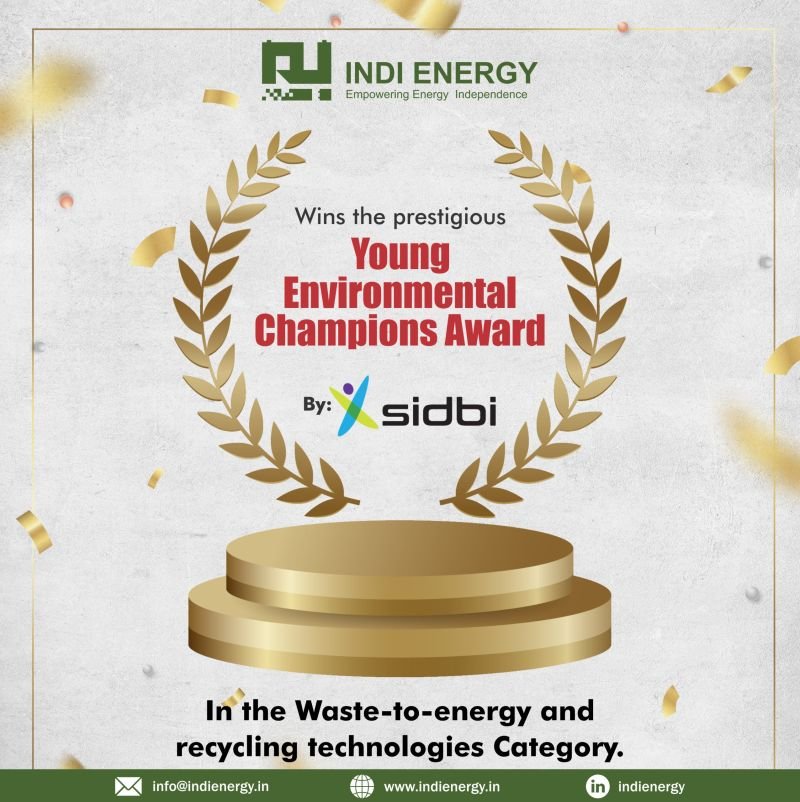
Indi Energy is back with the twelfth edition of “Sodium-ion Batteries Technology Updates.”
Indi Energy, a DRDO 3.0 and National Startup Award winner is an energy storage startup from India developing and commercializing sodium ion batteries. Through this twelfth edition of “Sodium ion batteries technology updates” we are bringing to you the recent developments in the world of energy storage technology. It’s time to dive into it!
Indi Energy shines at the 9th Smart City Expo.
Indi Energy presented its advanced energy storage, i.e., innovative sodium ion battery technology, at the 9th Smart City Expo. This three-day exhibition had 200+ speakers, more than 250 start-ups, and around 1200 global exhibitors. It saw a traffic of 55,000 business visitors and 1500 delegates.
Hall 5, DST Pavillion of Pragati Maidan, New Delhi, showcased Indi Energy’s sodium ion batteries, highlighting the importance of this technology for the future of smart cities, including smart mobility, power distribution systems, and smarter energy storage.

Hailed by top industrialists, authorities of the Indian Government, the Defence Sector staff, and Smart City Project Heads, Indi Energy proved yet again that the future of smart development lies with energy storage solutions through sodium-ion innovations. During this event, we answered hundreds of queries about our comprehensive energy storage solutions and how they will impact the future of the smart city as a concept itself. We are going to be collaborating with central and local level institutions for the implementation of sodium-ion technology and customizing them for prevailing projects, improving their efficiency and carbon footprint altogether with a futuristic technology and contributing to overall smart-city goals.
Why is the carbon footprint of Indi Energy’s Na-ion batteries low?
Sodium ion batteries have a remarkably lower carbon footprint at 10–20 kg of carbon dioxide per kWh compared to the 100–150 kg of carbon dioxide per kWh associated with comparable batteries. That is pretty impressive, right? Let’s find out why sodium ion batteries have such a low carbon footprint.
First of all, it is the sheer abundance of sodium. The extraction and processing of sodium are far easier than those of lithium, lead, phosphorus, or cobalt. This single factor is enough to halve the carbon footprint during production. Secondly, the lower environmental impact of the extraction of sodium ion battery material than lithium and allied materials is also a strong reason. With fewer resources being distributed for extraction, including soil, water, and habitats, the overall carbon emissions drop significantly.

Secondly, sodium ion battery manufacturing is less energy-intensive as compared to other batteries. Furthermore, the recyclability of the battery is significant, hence once again contributing to a lower carbon footprint. Lastly, once sodium-ion technology becomes more widely adopted, economies of scale will contribute to lower production costs and a lower overall environmental impact.
Now coming to the point, why Indi Energy’s sodium ion batteries have a significantly lower carbon footprint than contemporary batteries is primarily due to our hard carbon, i.e., BioBlack, which is derived purely out of bio and agricultural waste, and with the indigenization of raw materials for our battery components, we have further reduced the logistical impacts as well.
Indi Energy was awarded the Young Environmental Champions Award!
Indi Energy is thrilled to be honored as the SIDBI Environmental Champion in Waste-to-Energy and Recycling Technologies! Our sodium ion battery technology is fueled by our innovative biowaste-derived hard carbon anodes, revolutionizing sustainable energy solutions.

This recognition solidifies our commitment to a cleaner, greener future. We want to thank SIDBI for believing in our mission. Together, we will power innovation, reduce waste, and create a world where energy is not just efficient but environmentally conscious.
A final thought we like to share is that during our participation in the latest edition of Smart City Expo, we helped the stakeholders realize that it’s not only about incorporating digital assets and technology for the operational efficacy of a city, but it is also a great chance to decrease their impact on the environment all together.
As we save energy costs through smart cities, we can also optimize resources for eco-friendliness using sodium-ion technology, decreasing our dependency on scarce materials like lithium and cobalt.
We invite you to invest in and partner with us in building innovative products and technology for smart city infrastructure in India and across the globe utilizing breakthrough sodium ion batteries. At Indi Energy, we are not just aiming for innovation but for global accessibility. Connect with us on Facebook and LinkedIn, or through our contact page. Share your thoughts and expertise, and we promise you we will collectively overcome the obstacles and set off on a path to a sodium-ion-powered future.






